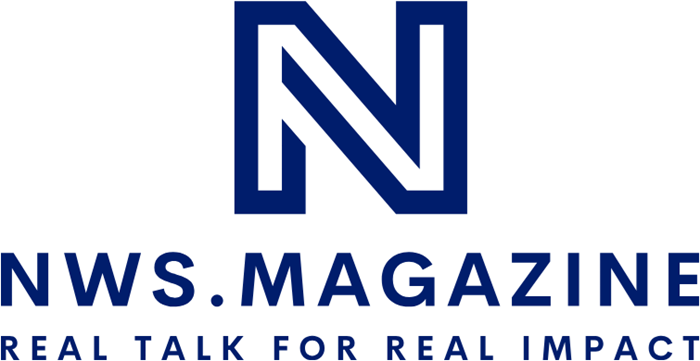Images speak louder than words.
Two leadership mindsets, one transformation:
The difference between growing a team – and scaling a system.
Today’s leaders face the same challenge as platform architects: creating the conditions under which performance can scale.
Why leadership must learn from platform ecosystems — and how clarity, enablement, and shared protocols are reshaping modern organizations.
A Leadership Model Under Pressure
Leadership in the 21st century is under increasing scrutiny. Traditional models — built on control, oversight, and top-down authority — no longer scale in a world shaped by speed, complexity, and platforms.
Platforms are changing not just how we build businesses – but how we (should) lead them.
As Harvard’s Amy Edmondson notes in The Fearless Organization, leadership today requires clarity, not control, and psychological safety — not fear-based compliance.
- ⇄ Control is replaced by clear interfaces
- ⇄ Oversight is replaced by orchestration
- ⇄ Directives are replaced by protocols — just as platforms replaced pipelines
Hierarchies scale linearly. Interfaces scale exponentially.
In software, APIs define how independent components interact — without dictating their inner workings.
That’s exactly how leadership must work in complex, distributed environments.
Leadership is no longer a role. It has become an API.
It connects, orchestrates, and enables — but doesn’t control.
Just like a conductor doesn’t play every instrument but synchronizes the orchestra through timing and cues, modern leadership doesn’t micromanage people — it provides the signals, interfaces, and shared logic that allow great performance to emerge.
This thinking aligns with the modular logic behind platform ecosystems and business model design, as pioneered by Alexander Osterwalder. His visual tools and systems thinking emphasize clarity, modularity, and interface-driven coordination — principles that now move beyond strategy and into the domain of leadership itself.
This mirrors the idea of platform governance as described by Annabelle Gawer: leadership should not exert control, but rather define the architecture that enables interaction, trust, and co-creation. It’s about setting the stage — not scripting the play.
What Platforms Teach Us About Leading at Scale
Geoffrey Parker, co-author of Platform Revolution, famously drew the line between pipelines and platforms. Where pipelines optimize for throughput and predictability, platforms thrive on participation, modularity, and dynamic interaction.
The same applies to leadership: You don’t direct every actor — you design the structure that lets performance emerge.
“While classical leadership relies on rules and reporting lines, platforms rely on architecture and alignment.
You don’t control value creation — you shape the conditions under which it can emerge.
We need to think of leadership more like an API: modular, interfaced and purpose-aligned.”
Platform Thinking in Practice: The Case of ZILEX
ZILEX, a modular B2B platform for heat exchanger solutions, applies platform principles not just technically — but organizationally, cultivating autonomy through alignment.
“Traditional leadership is built on control, oversight, and top-down decision-making.
That’s not how platforms are shaped — they’re designed for emergence, not enforcement.
Platforms are not about (micro)management — they are about empowering growth through collaboration, enablement and engagement, orchestrated within a clear structure.”
From Tech Architecture to Org Architecture:
— The Interface Is the New Org Chart
Just like platforms scale via standard APIs and modular governance, modern leadership scales through shared language, role clarity, and interface design. The “org chart” of the future may look more like a system map than a pyramid.
- ⇄ Interfaces instead of job descriptions
- ⇄ Protocols instead of instructions
- ⇄ Role alignment instead of positional power
To make this shift more tangible, here’s how traditional leadership patterns contrast with platform-based thinking:
| Old Leadership | Platform Leadership |
|---|---|
| Top-down control | Enablement through interfaces (APIs, shared boundaries) |
| Oversight and reporting lines | Orchestration and shared logic |
| Rules and directives (rigid hierarchy) | Protocols and alignment |
| Job descriptions | Clear interfaces and modular roles |
| Authority and positional power | Purpose and shared goals |
| Linear scaling via hierarchy (people-centered) | Exponential scaling via API logic (architecture-centered) |
Leadership Action Points: Start Thinking in Interfaces
To translate platform thinking into leadership behavior, consider these three actionable steps:
- 1. Define interfaces, not just roles. — Make it clear how functions connect, not just what they are.
- 2. Design protocols, not rules. — Create shared processes that enable autonomy, not rigid hierarchies.
- 3. Align on purpose, not power. — Replace authority with alignment on goals, outcomes, and shared standards.
Key Insight: Great leadership in complex environments means defining clear interfaces, enabling shared logic, and orchestrating collaboration — not micromanaging execution.
Conclusion
Platform builders don’t manage complexity — they design for emergence.
That’s the lesson for modern leadership: You don’t need to control every step, but you must architect the conditions.
In the age of networks, great leadership is no longer about control and enforcement — it’s about enablement, engagement and fostering self-commitment.
Still managing people — or already leading like a platform builder?
Further Reading & Sources
- Edmondson, Amy C. (2018). The Fearless Organization: Creating Psychological Safety in the Workplace for Learning, Innovation, and Growth. Wiley.
- Osterwalder, Alexander; Pigneur, Yves; Bernarda, Gregory; Smith, Alan; Etiemble, Frederic (2020). The Invincible Company: How to Constantly Reinvent Your Organization with Inspiration From the World's Best Business Models. Wiley.
- Gawer, Annabelle (2014). Bridging differing perspectives on technological platforms: Toward an integrative framework. Research Policy, 43 (7), 1239–1249. https://www.sciencedirect.com/science/article/pii/S0048733314000456
- Parker, Geoffrey G.; Van Alstyne, Marshall W.; Choudary, Sangeet Paul (2016). Platform Revolution: How Networked Markets Are Transforming the Economy—and How to Make Them Work for You. W. W. Norton & Company.
- ZILEX: The Future of Engineering
Quote used with kind permission of Musa Smakaj (ZILEX GmbH).
Image credit: Henning Lorenzen (own illustration)

